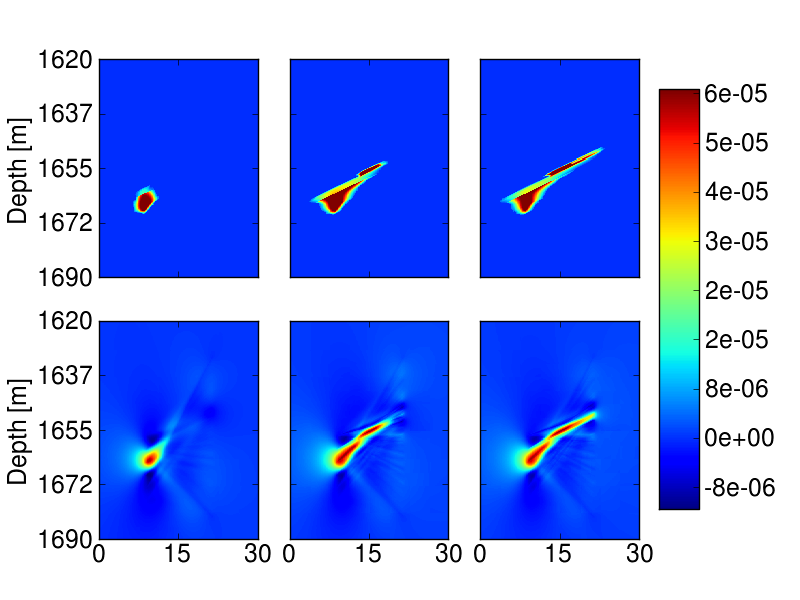Research interests
My research interests include
Inverse Problems and Imaging
Numerical Linear Algebra
Applications to environmental science, medical imaging, etc.
The relevant papers can be found here.
Software
Computing Karhunen-Loeve Decomposition on irregular grids link
Interpolatory tensor decomposition link
Hybrid iterative methods for Inverse Problems link
To get a sense of my research interests, here are some of my past projects.
Randomized Numerical Linear Algebra
 |
Randomized matrix methods are emerging as a powerful tool for dimensionality reduction in large-scale applications arising in Scientific Computing. I am developing numerical algorithms and analysis to efficiently compute low-rank factorizations, approximate matrix trace, determinants, and compute interpolatory decompositions. These approximations are useful in applications such as optimal experimental design, matrix biclustering, etc. Collaborators: Ilse Ipsen, Alen Alexanderian |
Tensor decompositions
 |
Many datasets can be naturally viewed as tensors. For example, a handwriting dataset contains images of handritten digits from multiple people. This can be viewed as a three-way tensor (pixels x people x digits). Efficient representation of theses datasets is important, as is the computational cost of handling these datasets, particularly in large-dimensions. I develop algorithms for computing tensor decompositions, with applications to facial recognition, handwriting digit classification.
Collaborators: Misha Kilmer
Optical imaging for biomedical applications
 |
Diffuse optical tomography (DOT) is an imaging technique in which the region of interest is illuminated with near infrared light at multiple wavelengths and observations of the resulting scattered diffuse fields at a number of locations surrounding the medium are used to image tumors. I have worked on making hyperspectral DOT more computationally feasible, which can enable it to be a viable non-invasive, cheap option for detecting breast cancer. Photoacoustic Tomography is another interest of mine, where both optical and acoustic measurements are used in image reconstruction. |
Collaborators: Eric Miller, Misha Kilmer, Sergio Fantini, Sarah Vallelian.
Subsurface imaging
 |
Accurate characterization of the subsurface properties such as hydraulic conductivity is necessary to manage underground sites, contaminant remediation (see cool video here), and locating natural resources. I have worked on fast algorithms for estimating hydraulic conductivity from head measurements, quantifying uncertainty associated with reconstructions and linear solvers for frequency and time-dependent groundwater simulations. |
Collaborators: Peter Kitanidis, Tania Bakhos, Jonghyun Lee.
CO monitoring
monitoring
 |
To reduce CO |
Collaborators: Eric Miller and Peter Kitanidis
Krylov subspace solvers for shifted systems
 |
Several frequency and time-dependent problems boil down to the solution of shifted systems of equations of the form 
We have developed efficient solvers for systems of these kinds by exploiting shift-invariant property of Krylov subspaces. |
Collaborators: Tania Bakhos, Peter Kitanidis, Daniel Szyld and Scott Ladenheim